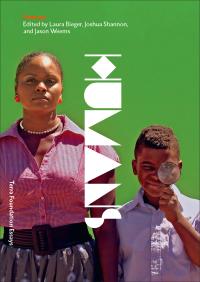In recent years, we have mourned the deaths of many of the most prominent scholars in Chinese calligraphy and painting working in the United States. Many other scholars have retired. It is time for us to celebrate their scholarship and the American contribution to the study of Chinese calligraphy and painting. The present volume examines critically the historiography of the field of Chinese calligraphy and painting in Postwar America, to assess its achievements, and to explore how various practices in the field have been affected by the personal backgrounds of its scholars and by the constraints of its institutions (such as universities, museums, private and public funding bodies).
Praise
"Historiographical studies, personal reminiscences, and autobiographical accounts by eight leading scholars of Chinese art history present a vivid picture of how formative figures in the field shaped American understanding of Chinese art. These accounts of what was accomplished in the decades after WWII, accompanied by suggestions for the future, are invaluable readings for students and scholars alike." Julia F. Andrews, Professor of Art History at The Ohio State University; author of Painters and Politics in the People's Republic of China and co-author (with Kuiyi Shen) of The Art of Modern China.
"This remarkable collection of essays by outstanding authorities celebrates some of the influential personalities who have shaped the field of Chinese art. They give a kaleidoscopic view of the diverse ways in which knowledge of Chinese art is acquired and transmitted." Alfreda Murck, author of Poetry and Painting in Song China: The Subtle art of Dissent, and co-editor (with Wen C Fong) of Words and Images: Chinese Poetry, Calligraphy and Painting.
"Chinese Calligraphy and Painting Studies in Postwar America: New Perspectives presents a collection of eight unique essays by experts in the field. It examines the trajectory of academic research on Chinese art history in the United States, which in recent years has become the center of the field. The book offers an opportunity to engage with the latest scholarship on Chinese art and discover how it arrived at its current state. The wide-ranging and insightful essays include historiographies of art historical research, veteran art historians' vivid memories of firsthand research experiences, biographical and scholarly investigations of major players in the field, and the systematic analysis of path-breaking explorations conducted by U.S. scholars. In reading, we are reminded how closely Chinese art history is connected to our own time and place. The book liberates the history of Chinese art from hackneyed narratives anchored solely in historical past and geographical confines, while providing a compelling account of how the history of art history has itself become a new avenue of academic pursuit." J. P. Park is the June and Simon Li Associate Professor in the History of Art and Fellow of Lincoln College, University of Oxford; author of Art by the Book: Painting Manuals and the Leisure Life in Late Ming China and A New Middle Kingdom: Painting and Cultural Politics in Late Choson Korea (1700-1850).



